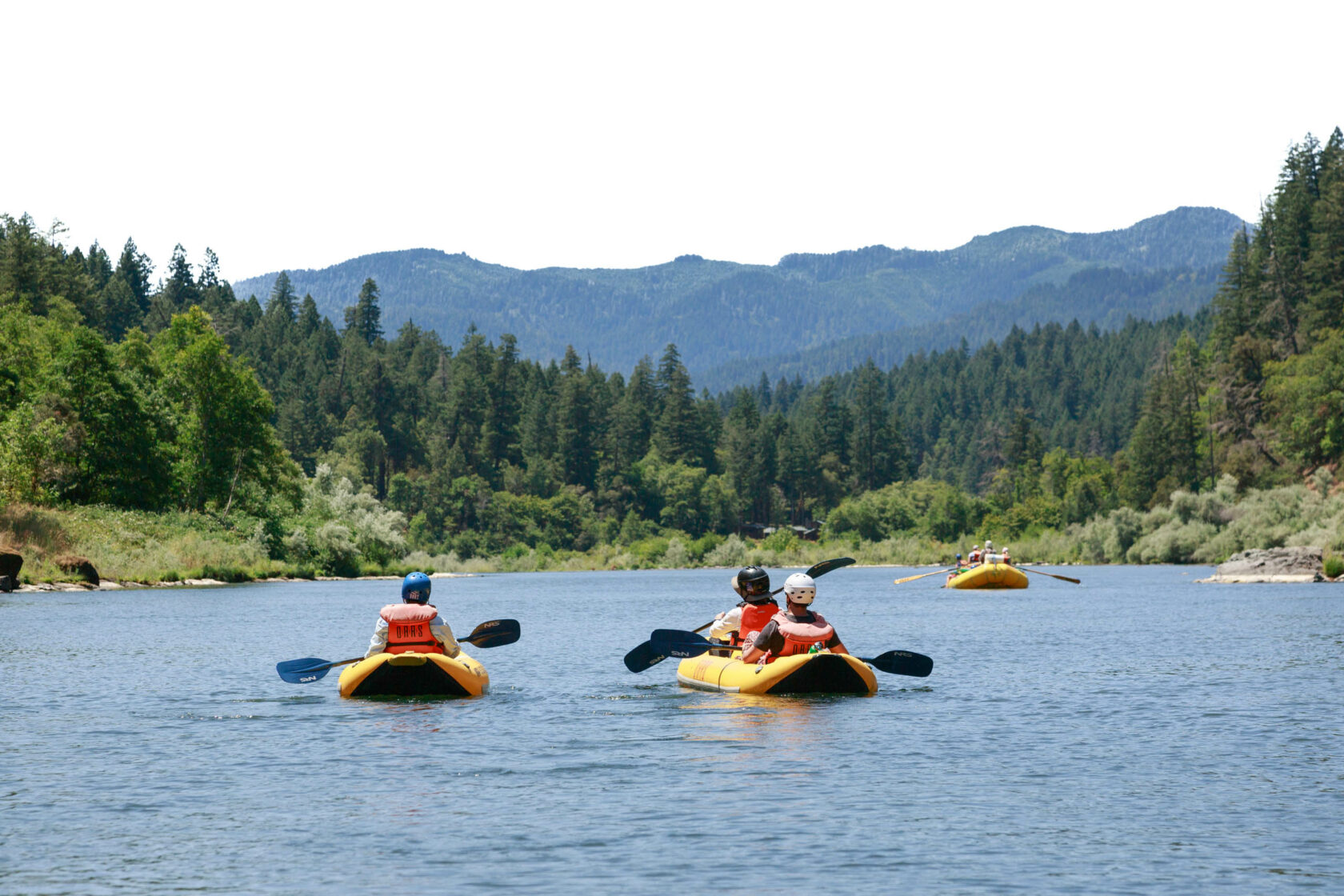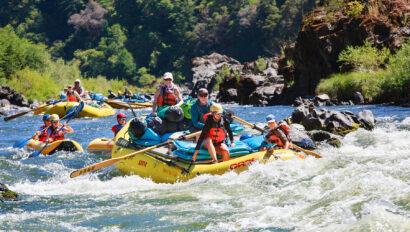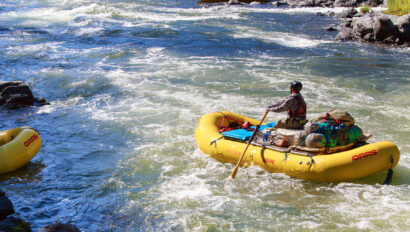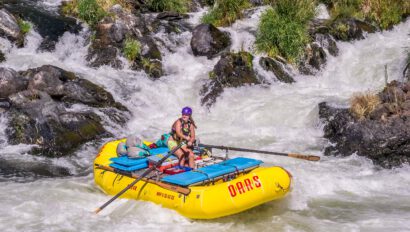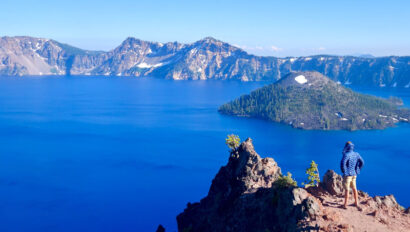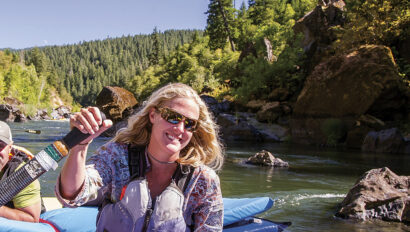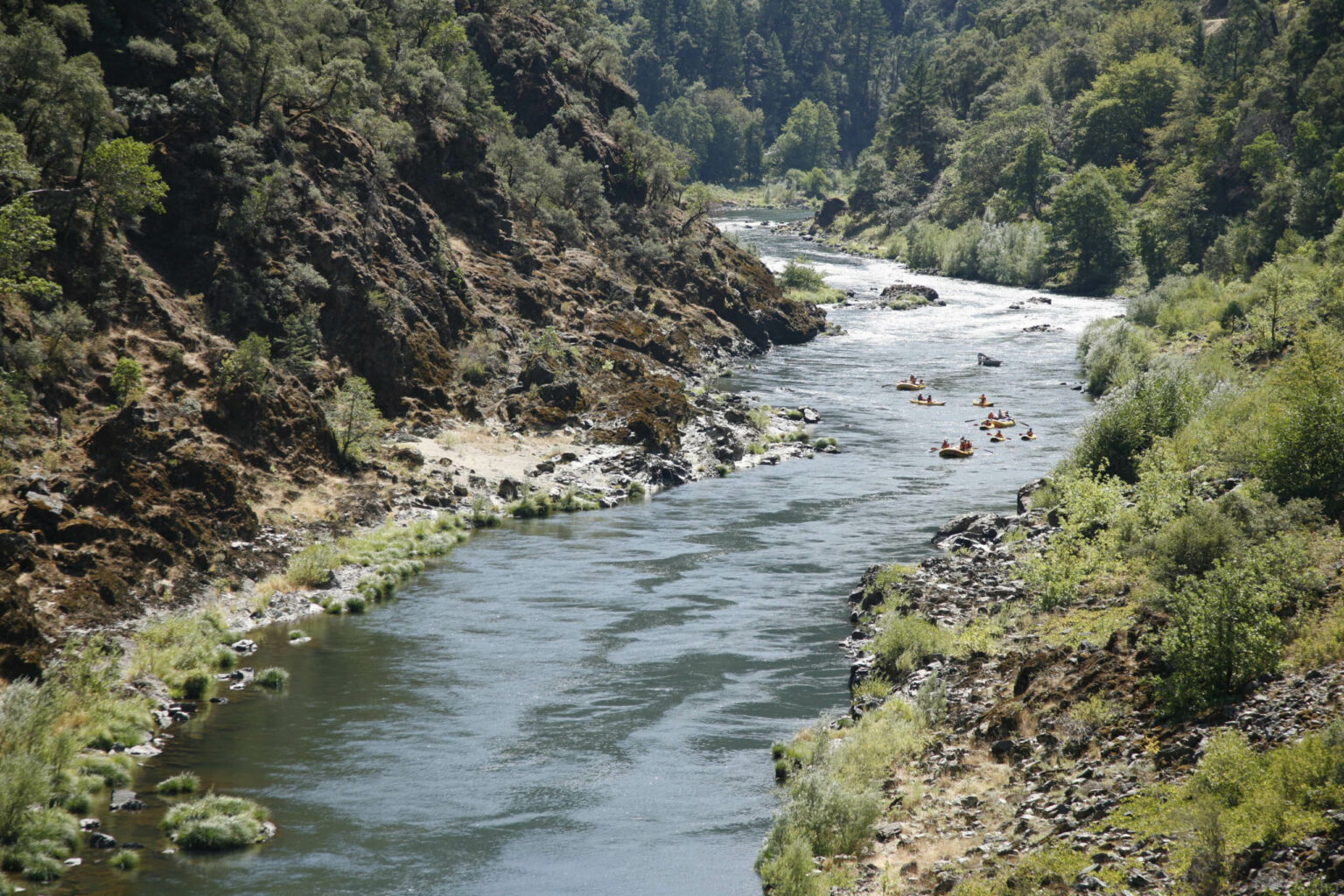
Rogue River
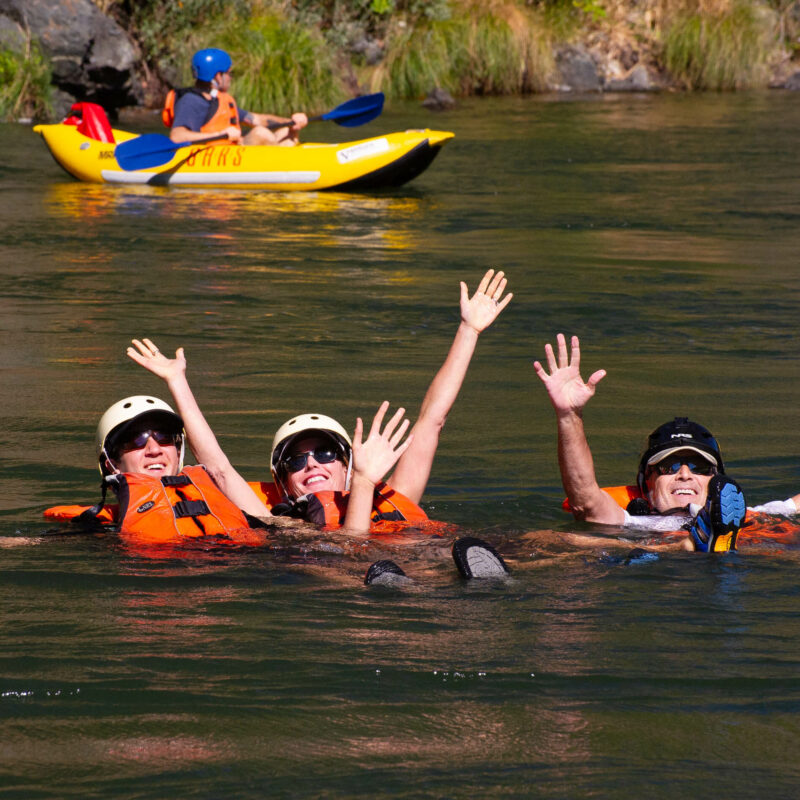
Experience Oregon’s Rogue River
One of the original rivers to be protected under the National Wild and Scenic Rivers Act, the Rogue River is well-deserving of this conservation accolade. The river is famous for abundant wildlife, cool clear water, and lush canyons with perfect campsites.
The Rogue has a violent history, though. During the Rogue River Wars, native tribes were chased and forcibly removed from the area as the Gold Rush brought traffic and white settlers to the region. Tututni, Shasta, Upper Rogue River Athabascan, and several other tribes formerly resided along the river, often relying on its massive salmon runs for sustenance.
Through the 20th century, dams cut off the fish migration, and what was once a bustling commercial fishery died out. Many of the smaller dams have since been removed, though the William L. Jess Dam that creates Southern Oregon’s Lost Creek Lake still stands. West of Lost Creek Lake, recreational trout and salmon fishing are still popular on the Rogue.
The wild stretches of the river are marked with technical and roaring hydraulics, like the Class IV Blossom Bar Rapid. Small tributary canyons create scenic waterfalls into pristine pools, perfect for side hikes. Gravel bars with sandy tree-lined banks offer flat and shady camping. All these elements culminate to make the Rogue River one of the most sought-after multi-day rafting destinations in the country.
Find Your Perfect Trip
ROGUE RIVER RAFTING ADVENTURES
This was truly the most amazing vacation my family and I have ever been on! Amazing guides, phenomenal food, exciting adventures, and forever memories. I HIGHLY recommend this trip for families.
OARS Rogue River guest
How long are Rogue River trips?
OARS Rogue River trips float a 40-mile section, starting near Almeda Bar and taking out at Foster Bar. We offer 3-, 4- and 5-day rafting itineraries. Unfortunately, OARS is not permitted to run 1-day rafting trips on the Rogue River.
What Rogue River specialty trips does OARS offer?
We offer a variety of specialty trips on the Rogue River, including wine and craft beer tasting, gourmet food-focused trips featuring local chefs, all-adult, and all-women adventures, as well as an annual rowing clinic for those looking to sharpen their river-running skills.
What is the whitewater like on the Rogue River?
The Rogue is generally considered a Class III river, making it very suitable for beginner or first-time rafters. A few of our favorite rapids are listed below:
Mile 9.1 — Rainie Falls (Class III-IV) This is typically a rapid we’ll scout along the left bank before either walking around or running the “fish ladder” on the right, depending on the water level.
Mile 12 — Wildcat Rapids (III). Splitting around a center divide, the river accelerates into a boulder-clogged right turn at the confluence of Wildcat Creek.
Mile 16 — Black Bar Rapid (Class III) Just before reaching the famous Black Bar Lodge; expect a few big drops and some major splashes.
Mile 28.4 — Mule Creek Canyon (Class III) One of the most unique sections of the Rogue River, with narrow, sheeted dike walls on either side that make for a thrilling welcome into a corridor with extremely powerful, unpredictable hydraulics. Inflatable kayaks should especially watch out for large boils and surging whirlpools in Coffeepot.
Mile 30.3 — Blossom Bar (Class IV). The largest and most difficult rapid within the Wild & Scenic section. Many boulders cluster the river here at the end of two vertical drainages, demanding that guides take challenging lines to maneuver around them. Its name stems from the abundant pink azalea flowers that color the banks along the rapid in the spring.
When is the best time to raft the Rogue River?
Rogue River trips run throughout the spring and summer, starting in May and ending in mid- to late-September. Spring trips are more likely to offer wildflowers in bloom, higher flows, and a more thrilling whitewater experience. It’s also the best season for hiking. Summer trips are fantastic for families who want to spend time swimming, inflatable kayaking, and exploring the river banks. Many of our specialty trips, like wine and craft beer tasting, leave later in the season when the winds are often calm and the weather is mild. Rain is possible any time of the year but more likely on early- and late-season trips. Wildfires are possible any time of the year but are more likely to affect late-season trips.
Can I fish on the Rogue River?
The Rogue is a fisherman’s paradise. There are four species of trout that live in the Rogue, though only steelhead is commonly seen on our trips. Two species of salmon also make their way up the Rogue to spawn in their place of birth. Chinook salmon can be seen fighting the rapids in the spring and again in the fall. The Coho, also known as the silver salmon, makes a fall run only. Generally, water temperatures are too warm for fishing in June, July, and August. The most abundant seasonal period on the Rogue is from September through mid-November, which offers some of the West’s best fly-fishing.
You’ll need to bring your own gear; please bring your rod protected in a hard case. Anyone over the age of 12 who is fishing (or is helping someone under the age of 12 to fish) must have a valid Oregon fishing license with steelhead and salmon tags.
Discover your next OARS Adventure
